# Configure metadata forms
Metadata forms have to be configured before you can use them.
# Assign aspects

To fill the metadata form with aspects and forms, you have to assign aspects to the metadata form.
Method
Select Add aspect mapping.
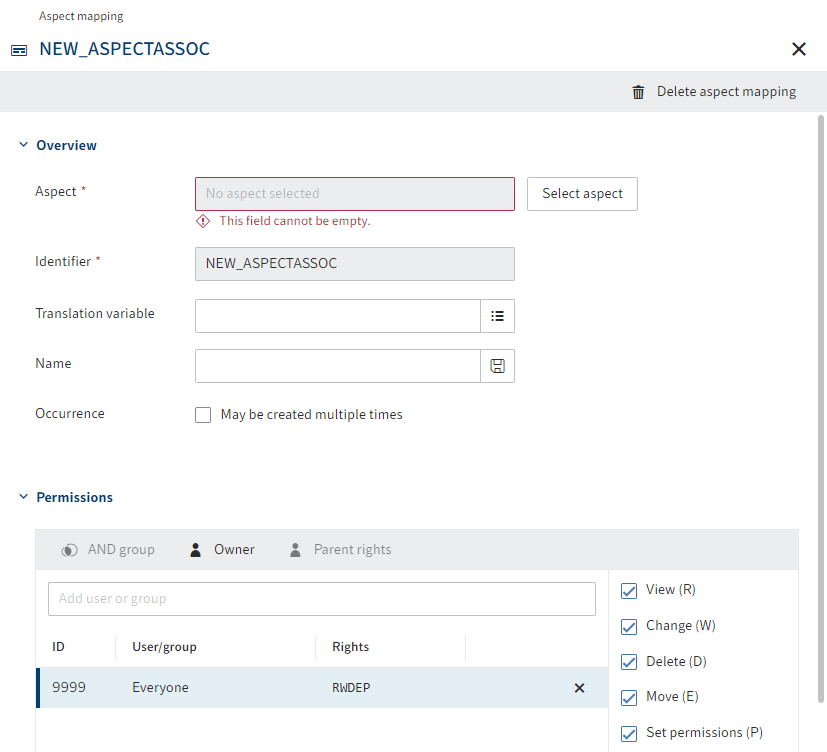
The Aspect mapping dialog box opens.
Select Select aspect.
The pick list of available aspects opens.
Select a suggestion.
Enter a technical name in the Identifier field.
Information
Only uppercase letters are possible.
Enter a translation variable into the Translation variable field.
Information
Option 1: Select one of the available translation variables from the drop-down menu. The Name field is completed automatically.
Option 2: Generate a new translation variable via direct input. Then, enter a name in the Name field and select the Save icon at the end of the field. The name is assigned to the translation variable and stored in the translation variable database.
Option 1: If necessary, enable the option May be created multiple times.
If this option is enabled, the behavior of the aspect in the form changes. A plus icon appears that can be used to add the aspect to the metadata form multiple times.
This can make sense if you've created an aspect for telephone numbers, for example. Instead of creating a separate aspect for all types of telephone numbers, use a basic type and enable the option May be created multiple times for it. Users can add as many telephone numbers as they'd like, as needed.
Please note
The view for the aspect must be created with the List type if you want to enable the option May be created multiple times for aspect mapping.
Option 2: If necessary, edit the permissions settings for the aspect mapping.
With the default settings, the aspect mapping can be used and seen by everyone.
Select Apply to save the aspect mapping.
Add all the aspects you need for the metadata form in this way.
# Create views

Once all the required aspects have been assigned to the metadata form, you have to create views for the form.
Method
Select Create view.
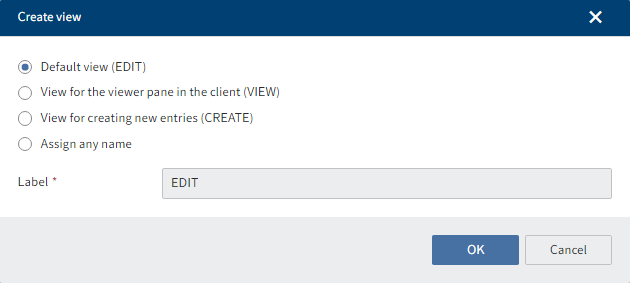
The form designer (gen. 2) opens. The Create view dialog box is open.
Select a type via the radio buttons.
Choose from the following options:
- Default view (EDIT)
- View for the viewer pane in the client (VIEW)
- View for creating new entries (CREATE)
- Assign any name: Create a custom type. In this case, you have to enter a name in the Name field.
Select OK.

This closes the dialog box. You are now in the form designer (gen. 2).
You will find more information about the elements and functions of the form designer under Forms (gen. 2)
On the Aspect mappings tab, you will see the aspect mappings of the metadata form.
Drag an aspect mapping to the layout area using drag-and-drop.
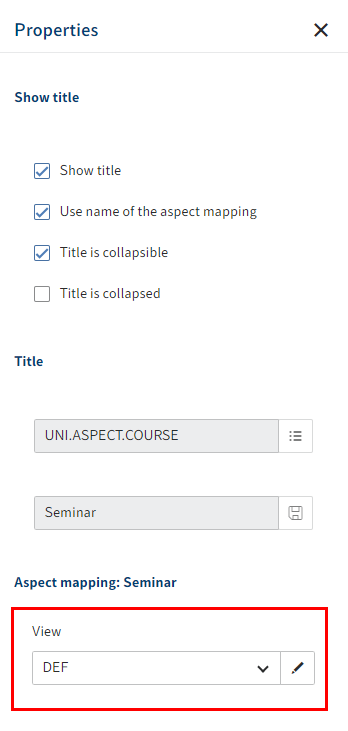
Under Properties, select a view from the View drop-down menu.
Optional: If necessary, edit the settings for displaying the name via Settings > Show title
Choose from the following options:
- Show title: If this option is enabled, the title of the aspect mapping is shown.
- Use name of the aspect mapping: If this option is enabled, the name of the aspect mapping is used as the title.
- Title is collapsible: If this option is enabled, the aspect mapping can be expanded and collapsed.
- Title is collapsed: If this option is enabled, the aspect mapping is collapsed by default.
Repeat these two steps until you have placed all the desired aspect mappings.
Select Save.
The view is saved and is now available. The metadata form can be used in the clients.
# Create dashboards
Method
Select Add dashboard.
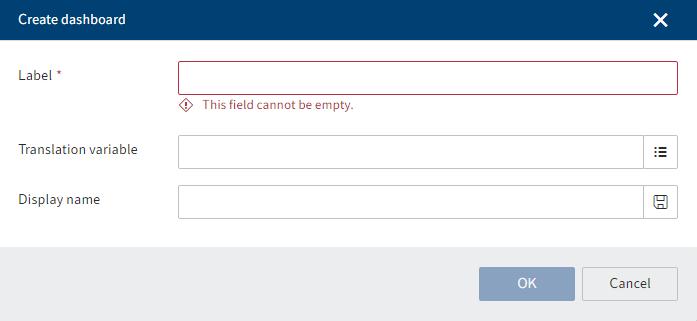
The form designer (gen. 2) opens. The Create dashboard dialog box is open.
Enter a name for the dashboard.
Optional: Enter a translation variable into the Translation variable field.
Information
Option 1: Select one of the available translation variables from the drop-down menu. The Display name field is completed automatically.
Option 2: Generate a new translation variable via direct input. Then, enter a name in the Display name field and select the Save icon at the end of the field. The name is assigned to the translation variable and stored in the translation variable database.
Select OK.

This closes the dialog box. You are now in the form designer (gen. 2).
You will find more information about the elements and functions of the form designer under Forms (gen. 2)
Under the Charts tab, you can select between bar chart, line chart, or doughnut chart.
Drag a chart type to the layout area using drag-and-drop.

Under Properties, you can configure the charts. The Field type field is fixed and cannot be configured.
The following configurations are possible:
1 Component: You can change the selected chart type via a drop-down menu.
2 Alignment: Use the drop-down menu to select the alignment of the chart. In a bar chart, for example, you can select whether you want to arrange the bars vertically or horizontally.
3 Breakdown by field: The representation in the chart is based on a field with aspect mapping from the metadata form. Select a previously created field for the chart in the drop-down menu.
4 Metrics: Select a metric for the chart. You can select between the following metrics for the calculation basis of the chart: Count, Average, Minimum, Maximum, Total.
Information
Different metric selections are available depending on the field type. While Count is especially suitable for field types such as keyword lists or text, use Average, Minimum, Maximum, Total for numeric field types.
5 Filter: Select the plus icon to add a field with aspect mapping as a filter.
6 Color palette: Select a color scheme for the representation of the chart.
7 Mapping type: You can assign colors by selecting the pencil icon next to the Mapping type field.
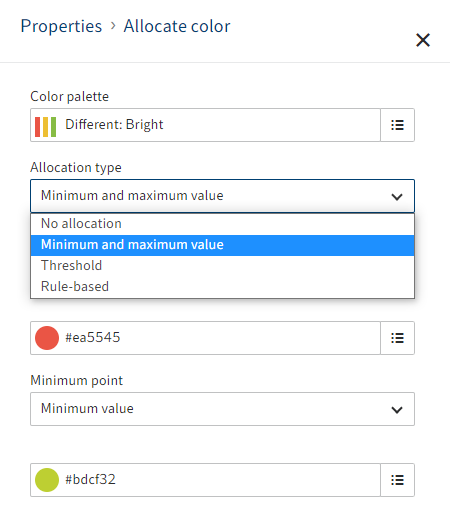
Select a color palette and a mapping type. Depending on the selected mapping type, you can assign specific colors for minimum and maximum values, thresholds and rule-based values.
8 Title translation key: Select a translation variable for the title of the dashboard.
9 Title: Select a title for the dashboard.
10 Subheader localization key: Select a translation variable for the dashboard subheader.
11 Subheader: Select a subheader for the dashboard.
Information
For fields with the assigned localization key field there are two optional methods:
Option 1: Select one of the available translation variables from the drop-down menu. The Name field is completed automatically.
Option 2: Generate a new translation variable via direct input. Then, enter a name in the Name field and select the Save icon at the end of the field. The name is assigned to the translation variable and stored in the translation variable database.
12 Size: To set the size of the chart, choose between the options Small width and height; Medium width, small height; Medium width and height; Large width, medium height; Large width and height.
Repeat these two steps until you have placed all the desired charts.
Select Save.
The dashboard is saved and is now available. The dashboard can be used.
# Configure usage
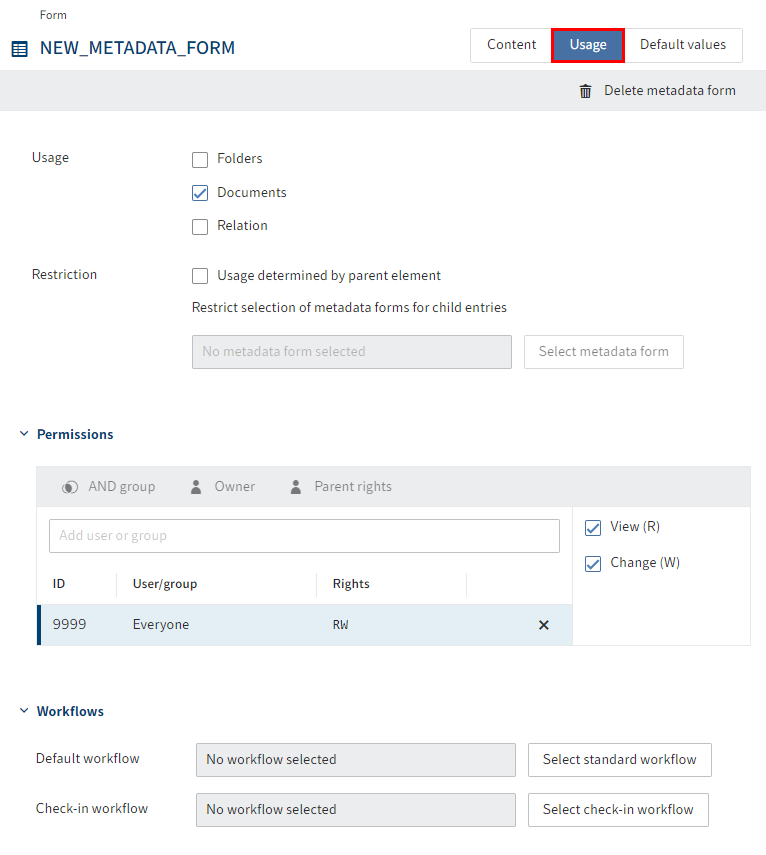
In the Usage tab, you can select which data type the metadata form is used for, assign form-specific permissions, and assign workflows.
# Configure default values
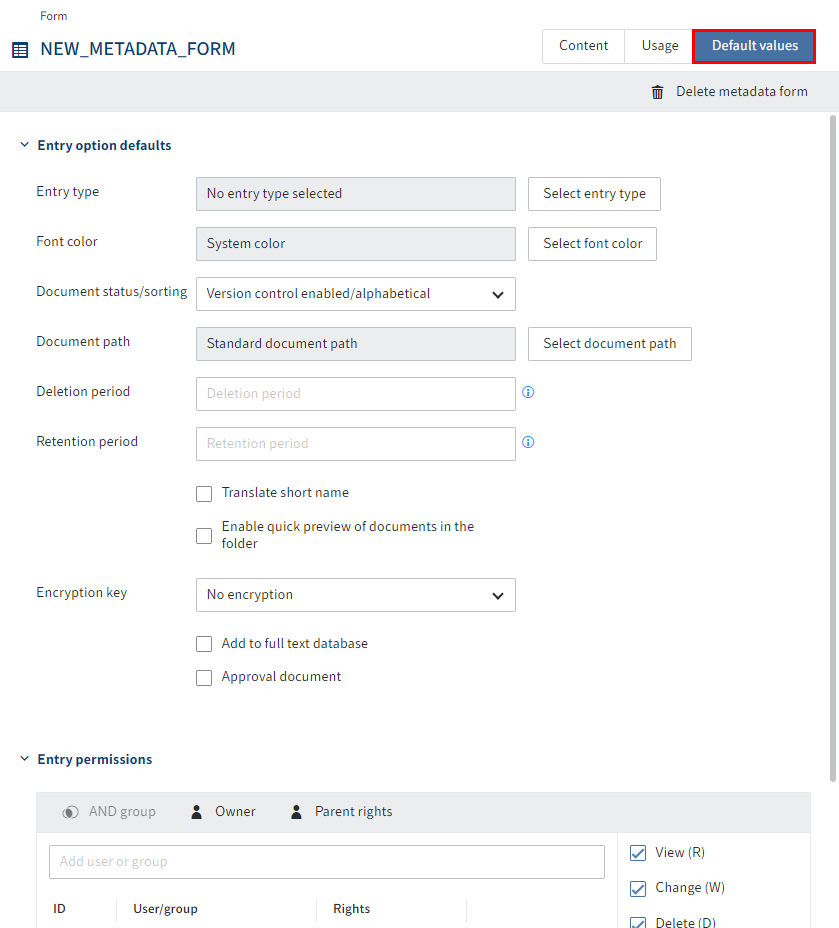
In the Default values tab, you can define preset values for the entries and specify permissions in the context of the entries.